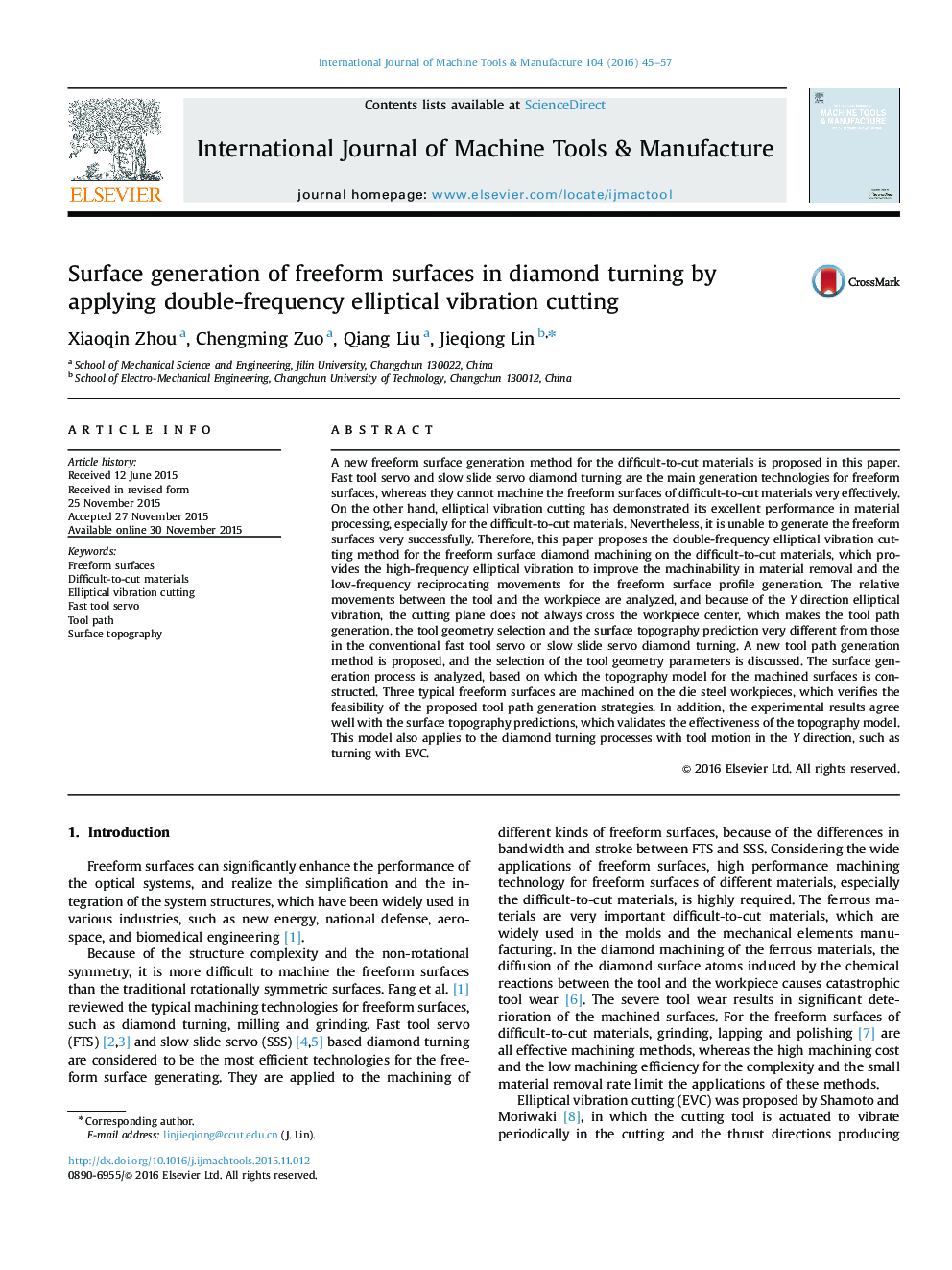| کد مقاله | کد نشریه | سال انتشار | مقاله انگلیسی | نسخه تمام متن |
|---|---|---|---|---|
| 784293 | 1464489 | 2016 | 13 صفحه PDF | دانلود رایگان |
• DFEVC is proposed for freeform surface machining on the difficult-to-cut materials.
• The tool path strategies are developed for DFEVC in diamond turning.
• The topography model is constructed for the machined surfaces.
A new freeform surface generation method for the difficult-to-cut materials is proposed in this paper. Fast tool servo and slow slide servo diamond turning are the main generation technologies for freeform surfaces, whereas they cannot machine the freeform surfaces of difficult-to-cut materials very effectively. On the other hand, elliptical vibration cutting has demonstrated its excellent performance in material processing, especially for the difficult-to-cut materials. Nevertheless, it is unable to generate the freeform surfaces very successfully. Therefore, this paper proposes the double-frequency elliptical vibration cutting method for the freeform surface diamond machining on the difficult-to-cut materials, which provides the high-frequency elliptical vibration to improve the machinability in material removal and the low-frequency reciprocating movements for the freeform surface profile generation. The relative movements between the tool and the workpiece are analyzed, and because of the Y direction elliptical vibration, the cutting plane does not always cross the workpiece center, which makes the tool path generation, the tool geometry selection and the surface topography prediction very different from those in the conventional fast tool servo or slow slide servo diamond turning. A new tool path generation method is proposed, and the selection of the tool geometry parameters is discussed. The surface generation process is analyzed, based on which the topography model for the machined surfaces is constructed. Three typical freeform surfaces are machined on the die steel workpieces, which verifies the feasibility of the proposed tool path generation strategies. In addition, the experimental results agree well with the surface topography predictions, which validates the effectiveness of the topography model. This model also applies to the diamond turning processes with tool motion in the Y direction, such as turning with EVC.
Journal: International Journal of Machine Tools and Manufacture - Volume 104, May 2016, Pages 45–57
